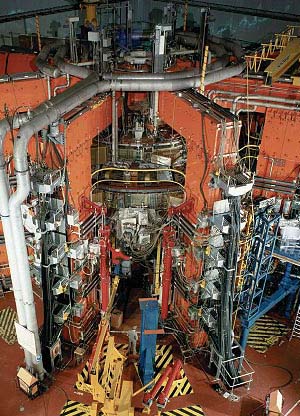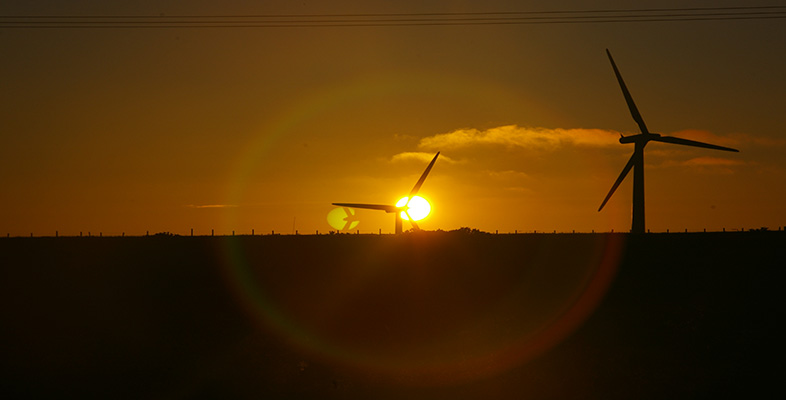3.2 Nuclear energy
Nuclear energy is based on harnessing the very large quantities of energy that are released when the nuclei of certain atoms, notably uranium-235 and plutonium-239, are induced to split or 'fission'. The complete fission of a kilogram of uranium-235 should produce, in principle, as much energy as the combustion of over 3000 tonnes of coal. In practice, the fission is incomplete and there are other losses, but nevertheless nuclear fuels are more highly concentrated sources of energy than fossil fuels.
The heat generated by nuclear fission in a nuclear power station is used to raise high-pressure steam which then drives steam turbines coupled to electrical generators, as in a conventional power station.
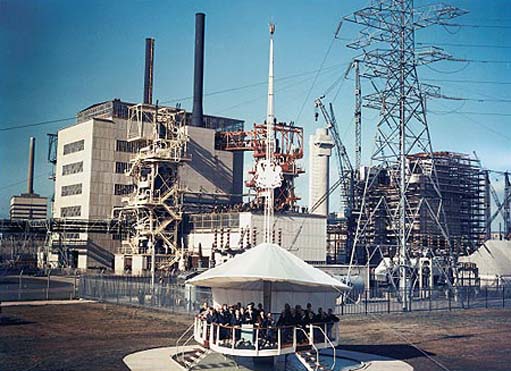
The development of 'peaceful' nuclear electricity generation after its use for military purposes in World War II was initially heralded as ushering in a new era of virtually limitless, clean power that some predicted would be 'too cheap to meter'. In practice, however, nuclear electricity has proved to be more expensive than that from fossil fuels. Since the UK opened the world's first grid-connected nuclear power station at Calder Hall in Cumbria in 1956, nuclear electricity generation has expanded to a point where it now accounts for nearly 7 per cent of world primary energy, and for over 17 per cent of the world's electricity. In some countries, it is the principal source of electricity generation. France, for example, derives three-quarters of its electricity from nuclear power.
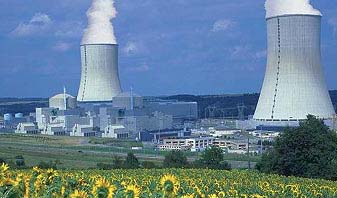
A major advantage of nuclear energy is that the operation of nuclear power plants results in no emissions of CO2 or of other 'conventional' pollutants like sulphur dioxide. However, there are some emissions from the fossil fuel used in uranium mining, nuclear fuel manufacture, and the construction of nuclear power plants.
There seems little danger of the world 'running out' of nuclear fuel in the near future. Uranium reserves have been identified in many countries and are sufficient for many decades of use at current rates, and there are probably enough additional deposits to extend this to several centuries. Furthermore, advanced nuclear technologies such as the 'fast breeder reactor' (FBR) could enable uranium deposits to be used even more effectively, thus extending the lifetime of reserves. In an FBR, the plentiful but non-fissile isotope uranium-238 is transformed into fissile plutonium-239, which can then be used as reactor fuel. But the development of FBRs has been inhibited by substantial technical and safety problems, and by the low price of uranium which currently makes the technology un-competitive economically.
Although the majority of nuclear reactors in most countries have operated without serious safety problems, a number of major accidents, like those at Windscale in the UK in 1957, Three Mile Island in the USA in 1979 and Chernobyl in the Ukraine in 1986, have created widespread public unease about nuclear technology in general – despite the opinion of nuclear-industry experts who argue that such anxieties are irrational.
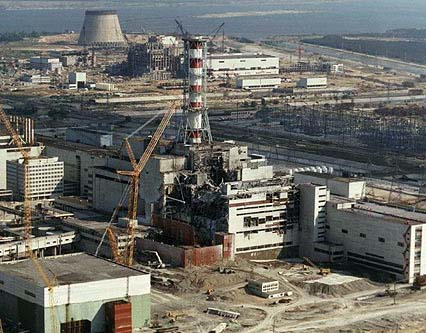
Less spectacular are the continued releases of harmful radioactive by-products, in small but insidious and cumulative quantities, to the atmosphere and oceans during the routine operation of nuclear power plants and fuel manufacturing or reprocessing facilities.
There is also the problem of how, ultimately, to dispose of nuclear waste products, some of which remain hazardous for many thousands of years; and the problem of proliferation of nuclear materials such as plutonium-239 and uranium-235, which could fall into the hands of 'rogue states' or 'terrorists' capable of creating crude but devastating atomic weapons from them. Nuclear power stations and reprocessing facilities may themselves be vulnerable to terrorist attacks, which could result in the release of very large quantities of radioactive substances into the environment.
Despite these difficulties, the nuclear industry is attempting to develop more advanced types of nuclear reactor which, it claims, will be cheaper to build and operate, and inherently safer, than existing designs. These are being promoted as an improved technological option for generating the carbon-free electricity that will be required later in the twenty-first century if global climate change is to be mitigated.
Another potentially important nuclear technology is that of nuclear fusion. As its name implies, this involves the fusing together of atomic nuclei, in this case those of deuterium (so-called 'heavy' hydrogen). This process, similar to that underlying the generation of energy within the sun, also results in the release of very large amounts of energy. However, in order to create fusion on earth it is necessary to create conditions in which the nuclei of special forms (called isotopes) of hydrogen interact in an extremely confined space at extremely high temperatures, and so far scientists have only been able to make this happen for a few seconds.
Moreover, the energy required to power the process currently greatly exceeds the energy generated. Research into fusion power continues, with substantial funding, but most experts consider that the technology, even if eventually it can be demonstrated successfully, is very unlikely to become commercially available for many decades.
